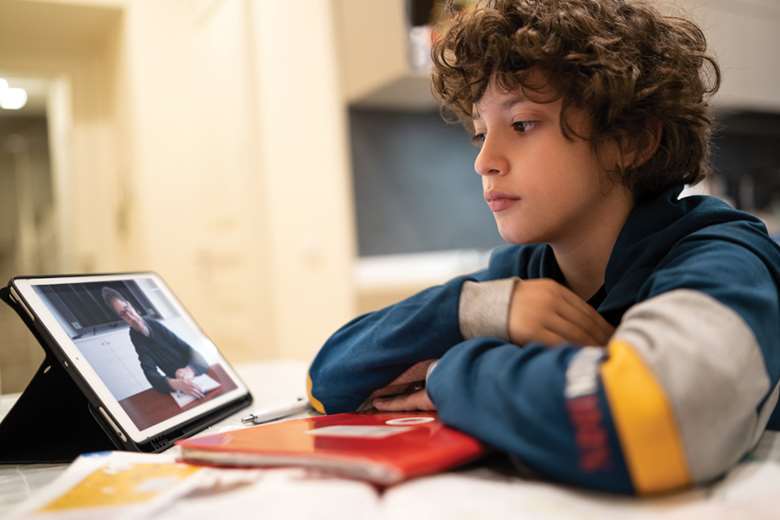Understanding the other side of the story
Andrew Swanson
Monday, March 25, 2024
Impartiality is one of the central pillars of the BBC. In an increasingly polarised world, its role in providing audiences with well-researched, high quality journalism is hugely important.

Now it wants to equip students with the skills they need to navigate the fine line between fact, opinion, and fiction.
We carried out research to mark the launch of the Other Side of the Story resources. It revealed that 80% of secondary school students believe it is important to know about what’s going on in the world. But almost two-thirds don’t know where to go or whom to trust to find out. It also showed us that young people discover what’s going on in the world from their parents and family. It is the source they generally trust the most. However, just over a third of those surveyed said social media is their preferred source for news. Armed with this information, we decided to create a suite of resources and workshops to help students navigate a challenging news landscape.
The thread that runs throughout all we do is to never overestimate students’ knowledge, but never under-estimate their intelligence. What we have found is a fascinating range of views on fake news. Some are adamant that they can’t believe any news outlet, or indeed anyone. And there are individuals who are totally unaware that not everything they see and share is necessarily legitimate.
How can you address the power of misinformation in the classroom? Well, there are three main pillars to our work: bias, debate, and algorithms. It is important to make students aware of how quickly their view of the world can change depending on these factors. Take bias which feeds into so much of how people think and feel about different issues. That might be our own unconscious bias or the more overt leanings we might have about say politics or sport. Students need to understand the power of a reasoned and rational debate. We want to encourage young people to disagree agreeably; to debate not hate. Finally, we focus on echo chambers and social bubbles. We’re living in a world in which algorithms can skew views and opinions. Young people can think things they're seeing on their social media feeds are mainstream views because they're seeing them so frequently. What they don't realise is that the more they interact with certain posts, the more those posts are likely to be served up to them time and again.
A great example is climate change. We stage workshops in secondary schools across the north of England. The aim is to encourage students to start thinking critically about how to assess the content, news, and information they consume. I recall a student in one of our workshops flagging a video they’d seen on TikTok that said the UK was going to flood imminently. What’s more, the onset of global warming would also soon see London under water. Other students said they’d seen it too and had shared it with friends on their messaging apps. Many were really upset and worried about the story. But it was clearly false and made to look like a legitimate news report. It highlighted just how quickly fake news can spread and affect people. During our workshops, we give students the tools to differentiate such stories from real journalism.
For teachers who want to help students navigate our complex media landscape, there are three practical top tips that I would like to share.
One of my favourite workshop activities is to split students into three groups. We provide each group with an envelope containing information on a subject from which they must prepare a 60-second news report. Each group is given an angle or bias for their report: in favour of the subject, against the subject or providing both sides of the story. The groups then present their news reports which differ widely depending on their prescribed bias. We then let them know that the source material in each envelope was exactly the same for each group. All three reports were different simply because of the bias they placed on their reporting .
Another practical exercise is to divide a classroom into three sections: ‘agree’, ‘disagree’ and ‘not sure’. Give students an opening statement on an issue such as ‘Social media firms should be banned from storing your personal data’. The students stand in the section that reflects their starting opinion (agree, disagree or not sure). Reveal two or three further facts about the issue and give them the opportunity to change where they are standing. The exercise is designed to help them think about informed opinions, and how often your starting view can alter when you consider other arguments.
Finally, consider an exercise to help demonstrate how quickly views and arguments can become polarised online. Give the students a flippant or funny starting statement such as ‘School dinners are brilliant’. Ask them to line up across the classroom. The two students with the most reasonable views are placed in the middle and then line students up starting with the more extreme views working their way out from the middle. Starting in the middle, students say one comment each until you reach the outsides of the lines and have two students with totally opposing, often irreconcilable views. The aim is to demonstrate how quickly opinions and arguments can become more extreme. You want students to consider whether they perpetuate or de-escalate a point of view.
Andrew Swanson is executive producer of Other Side of the Story. For more information, please visit www.bbc.co.uk/teach




